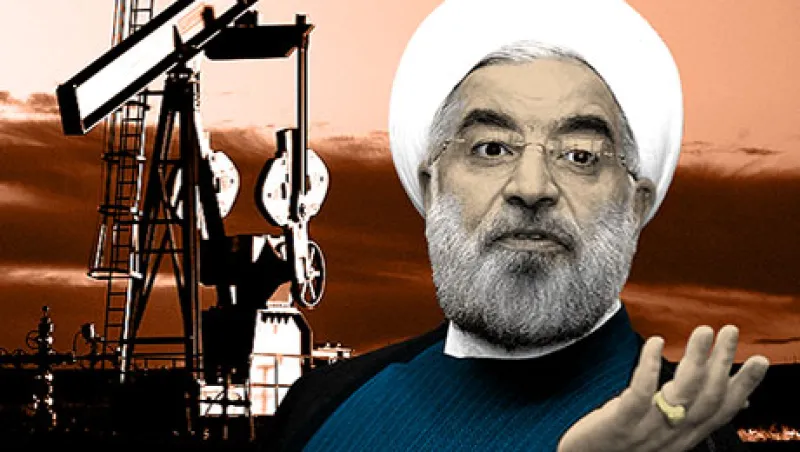Ever since the 1970s oil shocks, traders and investors have been keenly aware of the potential for sharp swings in energy prices to whipsaw their portfolio strategies.
So it’s no small relief that the outlook for global oil prices is benign. Three dozen global macro traders surveyed in December said the probabilities were good (46 percent) that North Sea Brent crude would trade between $100 and $120 a barrel; the market price was $106.92 on January 21. They also predicted a 1-in-3 chance that Brent would fall below $100, reflecting low risk of a Middle Eastern supply shock
Our traders and portfolio managers are less nervous that the Arab Spring will spill over into a supply shock that in turn will kick up oil prices. The mean prediction of no spillover rose from 52 percent in mid-2011 — almost an even-on bet — to 63 percent in May 2013.
The poll shows increasing confidence that the euro zone will hang together but also shows decreasing anxiety that chaos in the Middle East or Africa will keep oil prices at current levels or even drive them higher. “The short-run elasticity of demand for oil and the supply of oil is low, which means that small changes in supply from politically sketchy places like Libya, Iraq or Nigeria can have a relatively large impact on price, unless swing producers like Saudi Arabia can quickly bring excess capacity online or if consumer countries have built up large petroleum reserves,” explains a Zug, Switzerland–based energy trader, who spoke on condition of anonymity.
It was this kind of constricted supply shock that drove the price of North Sea Brent oil above $110 a barrel several times in 2013. Libya’s crude production, which averaged 1.8 million barrels per day in 2008, plunged to almost nil during the struggle to remove Muammar Qaddafi from power in 2011 before recovering quickly, back up to 1.6 million bpd. But output has since fallen all the way back to some 250,000 bpd because of infighting by militia groups over who controls the oil revenue. Nigeria has had a similar supply constriction, not by civil war but by garden-variety (if large scale) thievery, by which armed militia siphon off an estimated 6 percent to 7 percent of production.
The other wild card in Middle East politics and oil markets is Iran. The poll in mid-2013 assigned a probability of just 15 percent that the U.S. or Israel would conduct a military strike on Iranian nuclear facilities, and also dismissed the likelihood of a peaceful resolution of the nuclear program as well. So the average trader completely missed the breakthrough Joint Plan of Action signed in Geneva on November 24 — as did I. I thought the opposition to an interim agreement was impossibly high in Tehran and in Washington.
I was disabused of that notion on a visit to the Gulf in early November, when several Iranians told me that a deal was likely. At a nighttime dinner party in Dubai (outdoors, in 75 degrees F), a lovely visitor from Tehran told me that there was widespread support for a negotiated settlement inside the political religious establishment. “It’s not like the ayatollahs are divided between soft-liners and hard-liners,” she explained later. “They’re all hard-liners. But they are also all motivated by regime survival. The sanctions pushed them to the edge. So they gave [President] Hassan Rouhani room to deal.”
Iran’s crude production peaked at 4 million bpd in 2008 but has been gradually squeezed by sanctions to a modest 2.5 million bpd by 2013. The Joint Plan of Action potentially clears the way for a gradual increase in Iranian supply, but sanctions relief is reversible and contingent upon Iranian compliance as well as what promises to be very contentious negotiations over a longer-term “comprehensive” solution. The Iranians get their hands on only about an additional $7 billion from sanctions relief, and the Chinese and Indians get a waver to continue their crude purchases.
The biggest effect is to reduce the probability of a pre-emptive strike on Iran’s nuclear facilities by the U.S. to near zero, while negotiations are under way. Israel could strike unilaterally, but this would be both operationally and diplomatically extremely dangerous, reducing an already frayed relationship between Jerusalem and Washington to tatters. The forward-looking traders’ poll for 2014 still assigns a low probability to a military strike against Iran, just 15 percent (standard deviation of 7), with an 85 percent probability that negotiations with Iran will continue.
The net effect of contained Syrian spillover, Iranian negotiations and fundamentals in oil supply and demand — there are many variables in the equation — results in a moderately bearish outlook for Brent. Traders polled said there was an 18 percent chance that Brent would average more than $120 a barrel this year, a 35 percent likelihood the price would trade between $100 and $120 and a 46 percent chance the price would average less than $100. “Given upside to the U.S. oil supply growth story, and both Libyan and Iranian crude oil exports poised for rebounds given the thaw in Mideast tensions, a lot of ‘good news’ is in the price of oil,” predicts a trader at a Connecticut-based hedge fund who spoke on condition of anonymity. “The current Mideast peace dividend could send oil prices spiraling lower.”
A $10 reduction in oil prices translates into an increase in global economic growth of between 0.4 percent and 0.5 percent, according to a study by the International Monetary Fund. That would be good news for consumers, especially those emerging markets with big energy import bills and yawning balance of payments deficits. This is bad news for most producers, and especially bad news for those producers whose effective “breakeven” price for oil has risen because of the fiscal largesse that many producing governments have used to buy domestic political stability.
James Shinn (jshinn@princeton.edu) is lecturer at Princeton University’s School of Engineering and Applied Science and CEO of Teneo Intelligence. After careers on Wall Street and in Silicon Valley, he served as the national intelligence officer for East Asia at the Central Intelligence Agency and then as assistant secretary of defense for Asia at the Pentagon. He serves on the advisory boards of Oxford Analytica; Kensho; and CQS, a London-based hedge fund.
Also from this series:






